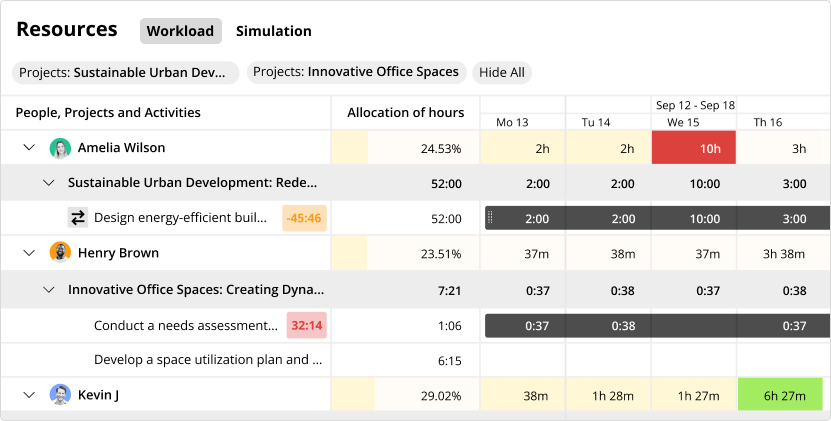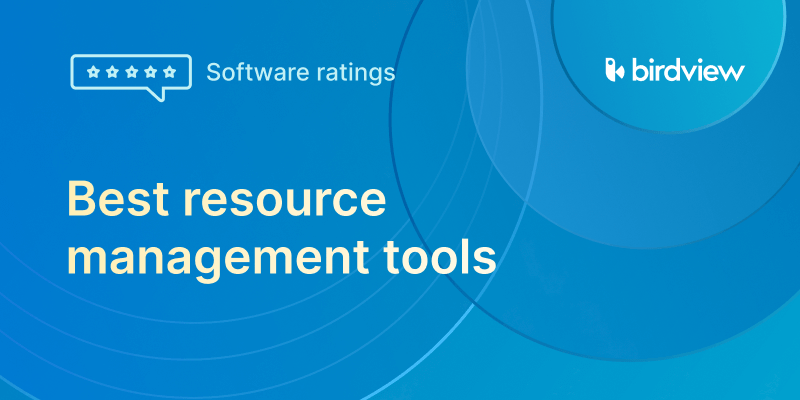Imagine you’re planning a party. You need to invite people, buy food and drinks, decorate, and set up the music. It’s a lot to do, and you need to make sure you have everything you need to have a successful party.
What Is Resource Scheduling?
Resource scheduling is similar. It’s the process of planning and allocating resources, such as people, equipment, and time, to tasks to complete a project on time and within budget. Resource scheduling is essential in project management because it helps to ensure that projects are completed efficiently and effectively.
Without proper resource scheduling, projects can quickly become over-allocated or under-utilized, leading to delays, cost overruns, and poor quality. Resource scheduling can also help to improve team communication and collaboration, as it provides everyone with a clear understanding of their roles and responsibilities.
Definition and Basics of Resource Scheduling
Resource scheduling is the process of assigning resources to tasks in a way that optimizes the use of those resources and maximizes the chances of project success. It involves considering the following factors:

- Types of resources: The types of resources that need to be scheduled can include people, equipment, time, and money.
- Resource availability: The availability of each resource needs to be assessed, taking into account factors such as existing commitments, vacations, and maintenance schedules.
- Task dependencies: The dependencies between tasks need to be considered, as some tasks cannot start until others are finished.
- Project deadlines: The project deadlines need to be taken into account, as resources need to be allocated in a way that ensures that the project is completed on time.
The difference between resource scheduling and task scheduling
Resource scheduling and task scheduling are two closely related concepts, but there is a subtle difference between the two. Resource scheduling is focused on allocating resources to tasks, while task scheduling is focused on sequencing tasks to complete the project on time and within budget.
Why Is Resource Scheduling Important In Project Management?
Resource scheduling plays a crucial role in project management due to its impact on various project constraints, including time, scope, cost, risk, quality, and, of course, resources themselves. Essentially, resource scheduling directly influences critical areas of project planning that project managers must consider.
In many projects, inadequate resource scheduling leads to delays in individual tasks, creating a ripple effect that affects the entire project timeline. These delays result in additional project costs, and at times, project managers may be compelled to either trim down the project scope or compromise the quality of deliverables to expedite the project.
Resource scheduling is important for many reasons, including:
- Ensuring efficient resource utilization: Resource scheduling helps to avoid resource over-allocation and under-utilization. Over-allocation can lead to burnout and decreased productivity, while under-utilization can lead to wasted resources and increased costs.
Quote from the book “Project Management” by Harold Kerzner:
“Resource scheduling is essential for the efficient use of resources. It helps to ensure that the right resources are in the right place at the right time, and that resources are not over-allocated or under-utilized.”

- Meeting project deadlines: Resource scheduling helps to ensure that projects remain on track and are delivered on time. By allocating resources to tasks in a way that optimizes their use, resource scheduling can help to minimize delays and ensure that projects are completed on schedule.
Example:
A construction company needs to schedule the resources needed to build a new house. The company needs to consider the availability of workers, materials, and equipment. The company also needs to consider the dependencies between tasks, such as the fact that the foundation needs to be poured before the framing can begin.
- Enhancing team collaboration: Clear resource schedules can improve communication and collaboration within teams. By understanding when and where their resources are allocated, team members can better coordinate their work and avoid conflicts.
Example:
A software development team is working on a new product. The team needs to coordinate their work to ensure that the product is completed on time and within budget. By using a resource scheduling tool, the team can see who is working on what and when. This helps to improve communication and collaboration and avoid conflicts.
Steps to Effective Resource Scheduling
Effective resource scheduling typically involves the following steps:
- Resource identification: Identify the types of resources that need to be scheduled. This can include people, equipment, time, and money.
- Resource availability analysis: Assess when and how each resource is available. This includes considering factors such as existing commitments, vacations, and maintenance schedules.
- Task prioritization: Rank tasks based on their importance, deadlines, and dependencies. This will help to ensure that the most important tasks are given priority and that tasks are completed in the correct order.
- Resource allocation: Assign resources to tasks based on priority and availability. This is where resource scheduling software can be very helpful, as it can automate the process of allocating resources and identifying potential conflicts.
- Review and adjust: Continually monitor resource allocation and make necessary adjustments. This is important because project requirements can change over time, and resource availability can also fluctuate.
Common Challenges and Solutions in Resource Scheduling
Some of the common challenges faced in resource scheduling include:
- Resource conflicts: Resource conflicts can occur when two or more tasks require the same resource at the same time. This can be resolved by prioritizing tasks, negotiating with stakeholders, or using resource scheduling software to find alternative solutions.
Example:
A software development team is working on two new products. Both products require the same team of programmers. To resolve the resource conflict, the team can prioritize the products and focus their resources on the most important product. The team can also negotiate with stakeholders to see if there is any flexibility in the deadlines.
- Changing project scope: Changes in project scope can impact resource scheduling, as new tasks may need to be added or existing tasks may need to be revised. It is important to regularly review resource allocation and make necessary adjustments to accommodate changes in project scope.
Example:
A construction company is building a new office building. The client changed the scope of the project to add a new floor. This will require additional resources and will impact the project schedule. The construction company needs to review the resource allocation and make necessary adjustments to ensure that the project is completed on time and within budget.
- Managing remote and diverse teams: Scheduling resources across different time zones and cultures can be challenging. It is important to be flexible and to use communication and collaboration tools to facilitate teamwork.
Example:
A company has a global team of employees working on a new product. The team members are located in different time zones and have different cultural backgrounds. To manage the team effectively, the company uses a project management tool that allows team members to communicate and collaborate in real-time. The company also provides training on cultural sensitivity and communication skills.
Tools and Software for Resource Scheduling
There are some resource scheduling tools and software available, such as Birdview, Microsoft Project, Smartsheet, or Monday. These tools can help to automate the resource scheduling process, identify potential conflicts, and generate reports.
When choosing a resource scheduling tool, it is important to consider the following factors:
- Features: Essential features to look for include real-time collaboration, integration capabilities, and resource forecasting.
- Ease of use: The tool should be easy to use and navigate for all team members.
- Affordability: The tool should be affordable and fit within the company’s budget.
Optimize your Resource Scheduling Process with Birdview PSA
Optimize your workforce capacity, reduce employee stress, and achieve timely project delivery by using Birdview PSA’s resource scheduling software to distribute tasks and resources across ongoing projects.
Confidently Strategize your Resource Scheduling
Confidently organize your resources with our powerful planning center. Schedule resources in advance, project your team’s capacity, and assess planned allocations against current resource utilization.

Optimize Workload Efficiency and Resource Scheduling with Business Intelligence
Efficiently plan and optimize your project resource capacity by visualizing your entire workforce. Identify and address future downtime, and prevent overloading team members with our resource scheduling tools.

The role of AI and machine learning
Modern resource scheduling tools use AI and machine learning to optimize and automate the resource scheduling process. For example, these tools can automatically identify potential resource conflicts and suggest solutions. They can also forecast future resource needs and recommend ways to optimize resource allocation.
Conclusion
Resource scheduling is an essential part of project management that helps to ensure that projects are completed on time, within budget, and to the required quality standards. By following the steps outlined above and using the right tools and software, project managers can overcome the common challenges of resource management and achieve successful project outcomes.
“Resource scheduling is a critical task in project management. It is the process of allocating resources to tasks in a way that optimizes their use and maximizes the chances of project success.”
from the book “Effective Resource Management in Project Workflows” by Peter Morris




